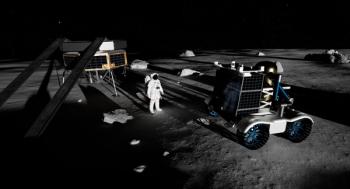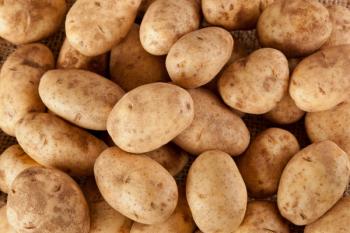
Best of the Week: Pittcon 2025, IoT Sensors
Top articles published this week include a video interview on the role of near-infrared (NIR) spectroscopy in food and bioanalysis, a recap of the Wallace H. Coulter keynote lecture at Pittcon, and an article about Internet of Things (IoT) sensors.
This week, Spectroscopy published various articles that touch upon several important application areas such as food analysis, bioanalysis, and regenerative engineering. We also have a few highlights from Pittcon this week. Several key techniques are highlighted, including Fourier transform infrared spectroscopy (FT-IR) and near-infrared (NIR) spectroscopy. Happy reading!
At Pittcon 2025 in Boston, Dr. Cato T. Laurencin delivered the Wallace H. Coulter Lecture on regenerative engineering. In his talk, Laurencin discussed how regenerative engineering integrates materials science, stem cell research, and clinical translation to restore tissues and organs (1). His talk focused on new approaches to repairing rotator cuff injuries, using biomaterials, stem cell applications, and electro-inductive matrices (1). Laurencin shared personal anecdotes, including receiving the National Medal of Technology and Innovation from President Obama (1).
This past week, Pittcon 2025 took place in Boston, Massachusetts. Throughout the week, separation science professionals gathered to explore laboratory science advancements. Although chromatography dominated the technical program, an important session on vibrational spectroscopy took place on March 2nd. Christian Huck, a professor at the University of Innsbruck, discussed the rapid advancements of molecular vibrational spectroscopy in food and bioanalysis (2). He highlighted its advantages—fast, non-invasive screening and simultaneous chemical and physical property assessment—compared to traditional separation and mass spectrometric techniques (2). Huck covered key techniques such as near-infrared (NIR), ATR infrared, Raman spectroscopy, and two-dimensional correlation spectroscopy (2D-COS) (2). In this video interview, he discusses the role of NIR spectroscopy in food and bioanalysis.
In a recent study, scientists from the Norwegian Institute of Food, Fisheries, and Aquaculture Research used NIR spectroscopy to estimate total soluble solids (TSS) in cherry tomatoes. TSS, which includes sugars and organic acids, influences fruit sweetness and consumer preference (3). The study tested a prototype NIR interactance system (760–1080 nm) against a commercial NIR reflection instrument (909–1676 nm) on 611 tomatoes and 22 trusses over 14 months (3). NIR interactance yielded lower prediction errors (0.38–0.52%) than reflection spectroscopy (0.70–0.98%) (3). Sensory analysis showed high correlations (0.88–0.99) with estimated TSS (3). The results suggest that non-contact NIR interactance spectroscopy enables accurate, real-time fruit sorting, improving quality control in tomato packing lines.
Scientists from the National University of Mongolia developed new methods for analyzing solvent-based extraction of bituminous coals. Their study, published in the Journal of Spectroscopy, focused on improving environmentally friendly coal extraction methods, essential for Mongolia’s harsh winters (4). Using FT-IR and scanning electron microscopy (SEM-EDS), they examined the solubility of Tavantolgoi (bituminous) and Alagtogoo (sub-bituminous) coals. Ionic liquid ([Bmim]Cl−) extraction proved more effective than traditional solvents, enhancing hydrogen bonding and mineral removal (4). The findings suggested that solvent-based extraction can optimize coal use for cleaner energy production while maintaining process efficiency and reducing environmental impact.
A recent review article by Mithilesh M. Wasu and Kishor M. Dhole explored the critical role of IoT sensors in automation and data-driven decision-making across industries. Sensors detect environmental changes, enabling real-time interaction without manual intervention. The study categorized sensors like IR, chemical, optical, humidity, and gyroscopic sensors based on their applications in healthcare, agriculture, and industrial automation (5). Spectroscopic techniques, including IR and Raman spectroscopy, enhance sensor precision (5). The review also examines actuators that work alongside sensors to execute actions (5). As IoT advances, intelligent sensors will remain essential in bridging the digital and physical worlds, improving efficiency and safety.
References
- Wetzel, W. Pittcon 2025: Keynote Coulter Lecture Highlights Work in Regenerative Engineering. Spectroscopy. Available at:
https://www.spectroscopyonline.com/view/pittcon-2025-keynote-coulter-lecture-highlights-work-in-regenerative-engineering (accessed 2025-03-06). - Wetzel, W. Pittcon 2025: Christian Huck Discusses Near-Infrared Spectroscopy in Food Analysis. Spectroscopy. Available at:
https://www.spectroscopyonline.com/view/pittcon-2025-christian-huck-discusses-near-infrared-spectroscopy-in-food-analysis (accessed 2025-03-06). - Acevedo, A. Cherry Tomatoes’ Flavor Compounds Measured with Near-Infrared Spectroscopy. Spectroscopy. Available at:
https://www.spectroscopyonline.com/view/cherry-tomatoes-flavor-compounds-measured-with-near-infrared-spectroscopy (accessed 2025-03-06). - Acevedo, A. Analyzing Coals Using Fourier Transform Infrared Spectroscopy. Spectroscopy. Available at:
https://www.spectroscopyonline.com/view/analyzing-coals-using-fourier-transform-infrared-spectroscopy (accessed 2025-03-06). - Workman, Jr., J. Transforming Connectivity with a Comprehensive Review of IoT Sensors. Spectroscopy. Available at:
https://www.spectroscopyonline.com/view/transforming-connectivity-with-a-comprehensive-review-of-iot-sensors (accessed 2025-03-06).
Newsletter
Get essential updates on the latest spectroscopy technologies, regulatory standards, and best practices—subscribe today to Spectroscopy.



